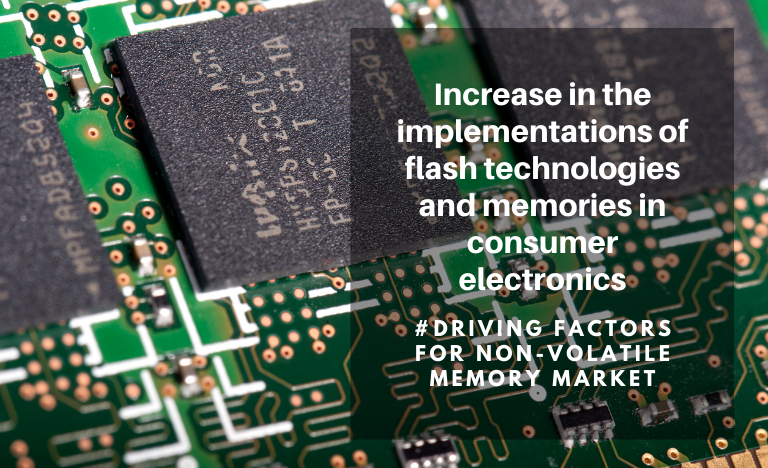Table of Contents
Non-volatile memory market – Introduction
The non-volatile memory market report analyzes market potential, growth possibilities, size, trends, and leading competitors by data storage type, end-use industries, and regions. With the rise in demand for digital media applications, the non-volatile memory market is expected to grow at a fast rate. Its use in USB memory sticks or cameras has contributed to the growth of the non-volatile memory (NVM) market in the forecast period from 2022-to 2032.

Non-volatile memory refers to storage that saves data regardless of the computer being switched on or off. Non-volatile storage helps in retrieving stored information when the power is switched off. This kind of memory is used for secondary and long-term persistent storage.
Report Overview
| Aspect | Details |
| Base year of Estimation | 2021 |
| Forecast Period | 2022 – 2032 |
| Market Segmentation | By Data Storage Type, End Use Industries, Regions |
| Regional Scope | North America, Europe, Asia Pacific, Middle East & Africa (MEA) and Latin America |
| Report Coverage | Market Dynamics, Segmentation Overview and Competitive Landscape of the market |
Market Segmentation Overview
| Term | Segments |
| By Data Storage Type | Mechanically Addressed Types and Electrically Addressed Types |
| By End Use Industries | Automotive and Transportation, Telecommunication, Healthcare, Consumer Electronics, Military & Aerospace, Agriculture, Retail & Industrial |
| By Regions | North America, Europe, Asia Pacific, Middle East & Africa (MEA) and Latin America |
Major Players in the Market
| Headquarters | Corporations |
| Japan | Toshiba Corp. |
| U.S. | Western Digital Corp., Intel Corporation, Sandisk Corporation, Viking Technology, Kilopass Technology Inc., Micron Technology Inc., Adesto Technologies Corporation |
| South Korea | Samsung Electronics Co., Ltd. |
| Korea | SK Hynix Inc. |
What Are the Driving Factors for Non-Volatile Memory Market?
- Increase in the applications of non-volatile memory in computers, smartphones and digital media
- Increase in the implementations of flash technologies and memories in consumer electronics
- Non-volatile memory reduces the use of slow secondary storage devices, such as hard disks

Market Dynamics
The rise in non-volatile memory applications in computers, smartphones, and digital media has impacted the demand for the non-volatile market. Steady growth in the adoption of flash technologies and memories in consumer electronics has been a major reason for the growing demand in this market. Non-volatile memory reduces and eventually eradicates the need to use slow secondary storage systems like hard disks. Electrically addressed non-volatile memories of the semiconductor are produced on a large scale, and these do not need any update post-manufacturing. The programmable read-only memory can get updated and altered. It is achieved with the help of a special programmer who stores data physically by burning the device. Long-term retention of data has been one of the key factors that have impacted this market.

Certain restraints limit the growth of this market. One such limitation is the high costs of non-volatile memory technology. Low performance and low endurance also pose challenges for this market. ReRAM (Resistive Random Access Memory) and PCM (Phase Change Memory) are emerging technologies. These will provide huge growth opportunities for the non-volatile memory market in the coming years.
Market Segmentation Overview
By data storage type
On the basis of data storage type, the market for non-volatile memory is segmented into mechanically addressed types and electrically addressed types.
By end use industries
On the basis of end use industries the market is segmented into automotive and transportation, telecommunication, healthcare, consumer electronics, military & aerospace, agriculture, retail & industrial. In 2019, high demand for non-volatile memory applications in digital media and electronic devices boosted the demand for this market.
By regions
Depending on regions the market has been segmented into North America, Europe, Asia Pacific, Middle East & Africa (MEA) and Latin America. Asia Pacific is expected to form the largest segment in terms of revenue. This segment is going to witness the highest growth during the forecast period. After Asia Pacific, North America and Europe is expected to be the other major regions.
Final Words
As compared to Asia Pacific, Europe and North America, concentration of these service providers is comparatively low in Latin America, Middle East & Africa (MEA). But the market is growing steadily in all these regions.



